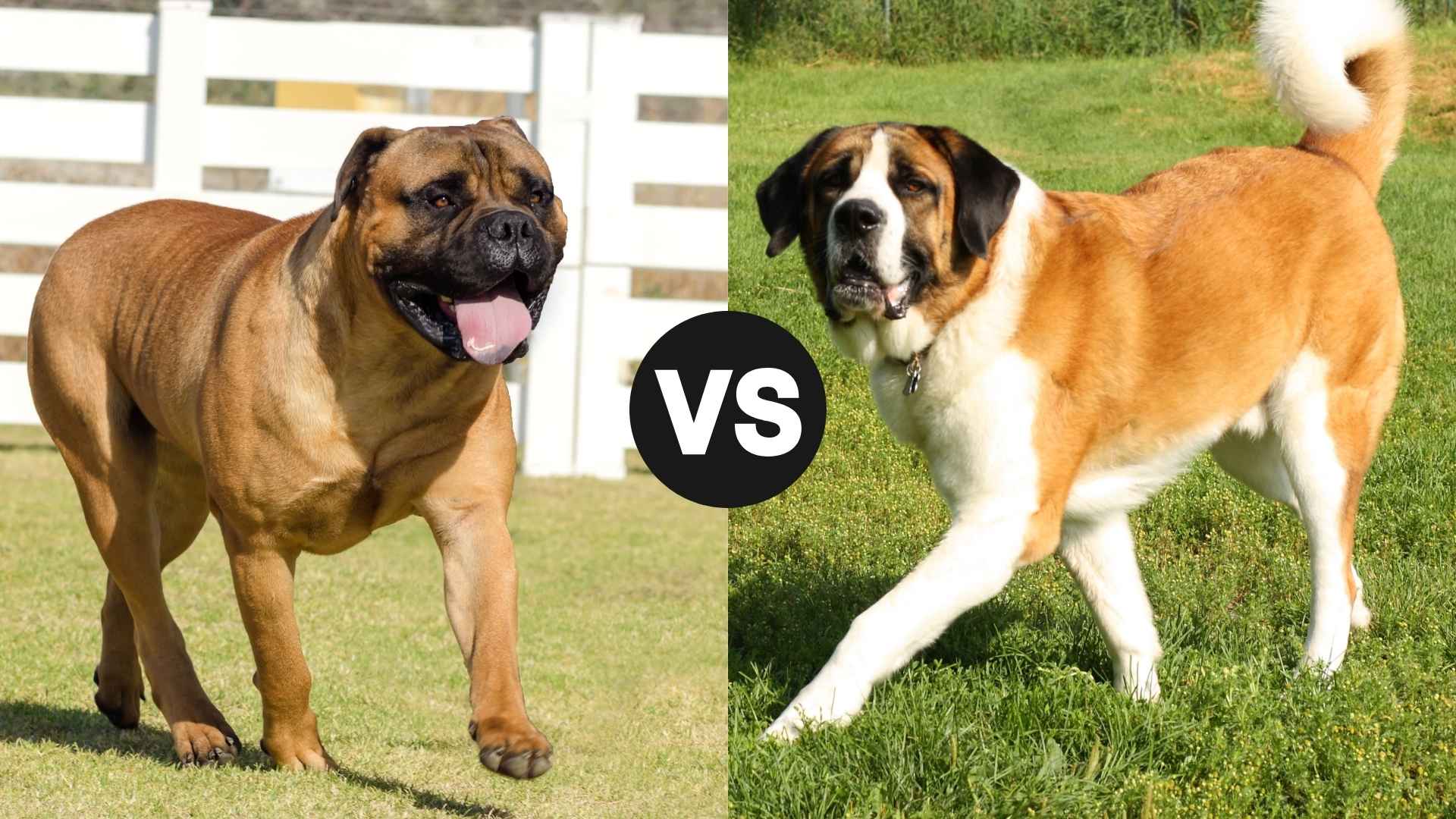When it comes to big-hearted giants, few can rival the Bullmastiff and the Saint Bernard. Both breeds bring an irresistible mix of strength, loyalty, and cuddly charm to the table—but choosing between them isn’t as easy as it sounds.
One was bred to guard English estates, the other to rescue stranded travelers in snowy Alpine passes. One has a stoic, protective streak, the other a famously droopy, affectionate demeanor. We’ll dive into what makes each breed unique, from their size and grooming needs to their personalities and roles within a family.
Whether you’re looking for a gentle watchdog or a loving giant to warm your couch (and probably your whole living room), understanding the differences between the Bullmastiff and Saint Bernard is key to making the right match.
So, which one is best for your lifestyle? Do you prefer the dignified calm of the Bullmastiff or the warm, slobbery love of a Saint Bernard?
Let’s settle the showdown of these majestic breeds and find your perfect furry companion.
Bullmastiff vs. Saint Bernard
Bullmastiff vs. Saint Bernard: Visual Characteristics
Imagine you’re walking through a foggy mountain pass or maybe guarding a secret treasure in an English manor. Who would you want by your side? Let’s dive into the world of these lovable behemoths and see how they match up.
Bullmastiff:
Size: 24–27 inches tall, 100–130 pounds of pure, bouncer-style bulk.
Coat: Short, dense, and low-maintenance—think military-grade velvet.
Color: Fawn, red, or brindle with a trademark black mask that says, “I’m not angry, just disappointed.”
Vibe: All muscle, broad shoulders, and a stance that screams, “Nobody’s sneaking past me tonight.”
If Batman had a dog, it might be a Bullmastiff. Powerful yet calm, this breed looks like it was born wearing a tuxedo and guarding a vault.
Saint Bernard:
Size: 26–30 inches tall and weighing in at a cuddly 120–180 pounds (some tip past 200).
Coat: Can be short or long, but always fluffy enough to double as your winter blanket.
Color: White base with red, brown, or brindle patches; soulful eyes and a droopy face that says, “Would you like a hug or a whole sofa cuddle?”
Vibe: Giant teddy bear crossed with a medieval monk. Gentle, drooly, and dignified.
The Saint Bernard could star in a Hallmark movie—saving lives in the Alps by day, napping dramatically by the fire by night. According to the American Kennel Club (AKC), the Saint’s official breed standard is filled with descriptions such as “very powerful,” “extraordinarily muscular,” “imposing,” and “massive.”
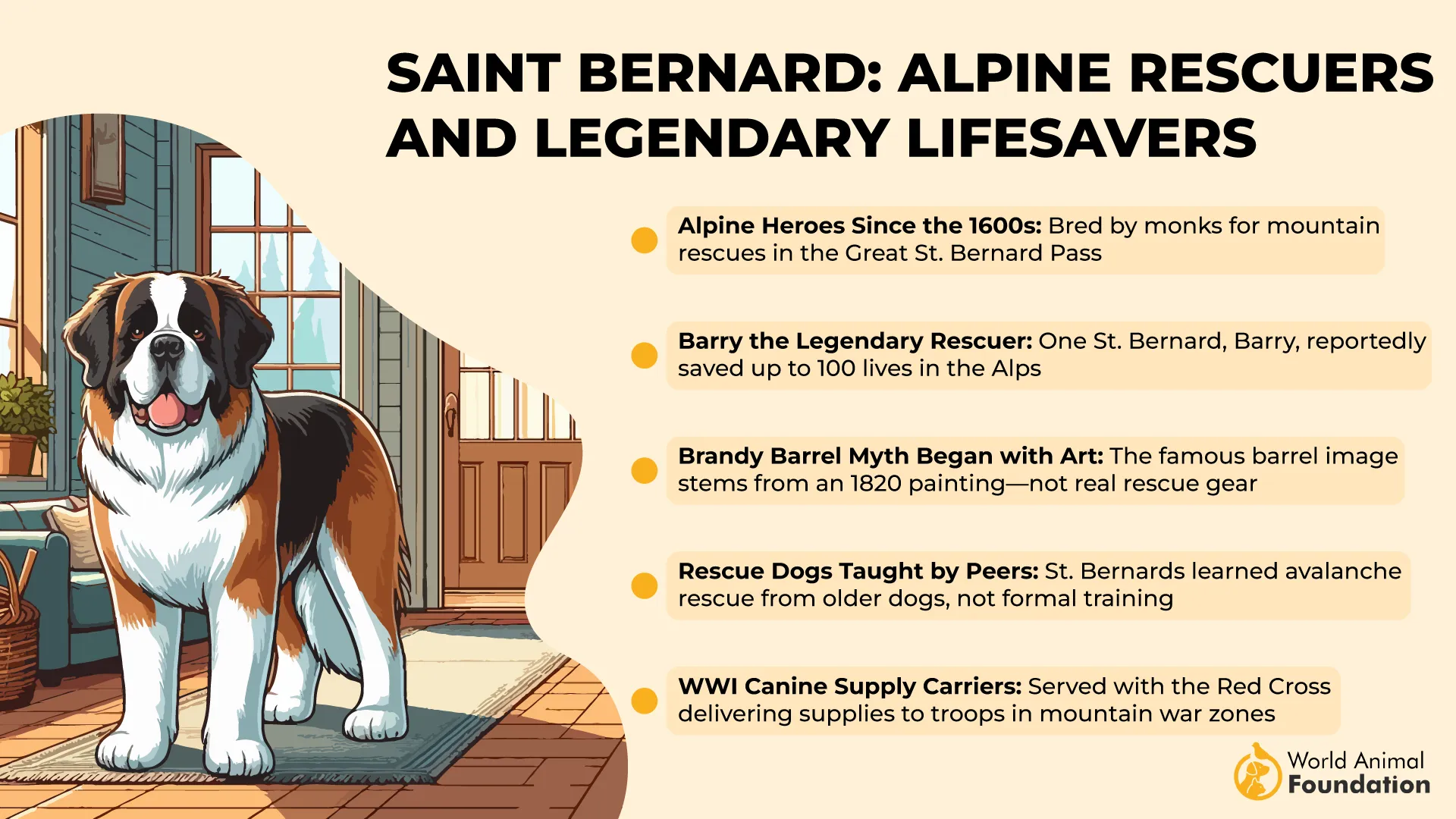
Bullmastiff vs. Saint Bernard: Personality and Temperament
Let’s keep the fun going with a side-by-side look at the personality, temperament, and exercise needs of the Bullmastiff and Saint Bernard. Whether you want a stoic snuggler or a droopy-faced couch potato, one of these gentle giants might be your paw-fect match.
Bullmastiff:
Temperament:
Calm, courageous, and confident. The Bullmastiff doesn’t bark without a reason—and when it does, something’s up. This dog is the bodyguard of the dog world. Stoic. Loyal. Unbothered by nonsense.
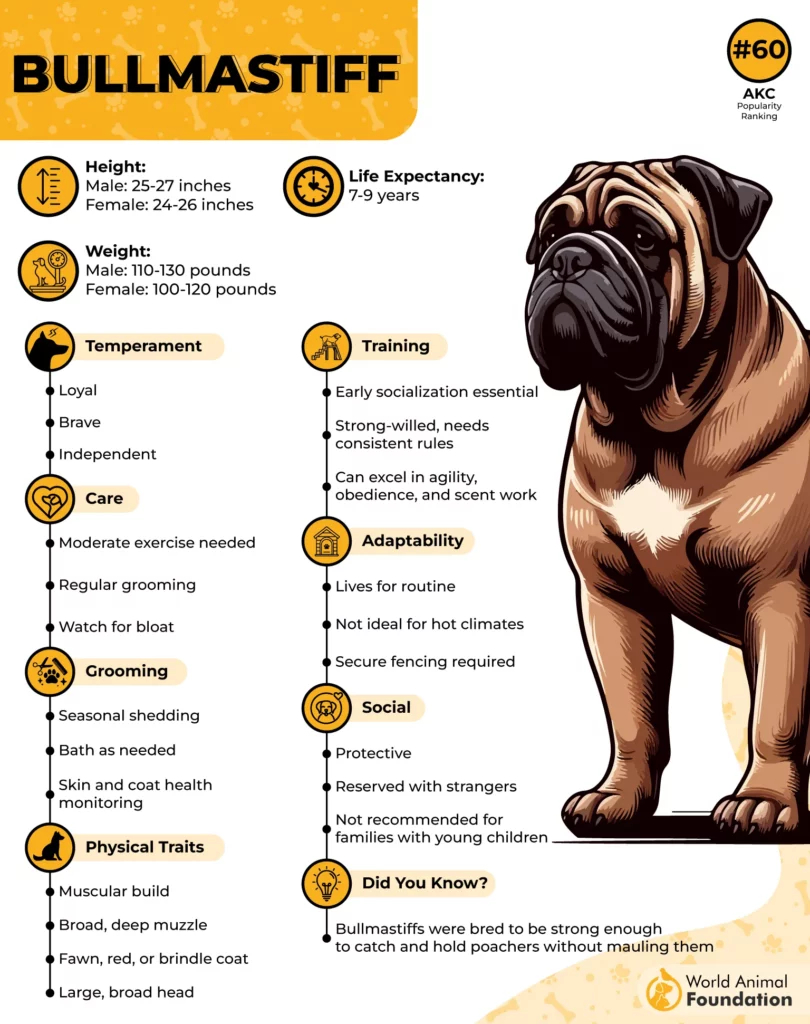
Personality Traits:
✔ Incredibly devoted to their family.
✔ Can be aloof with strangers, but not aggressive unless provoked.
✔ Surprisingly gentle nature, especially when raised with them.
✔ Doesn’t need constant attention, but always wants to be nearby, preferably blocking a hallway or lying directly on your feet.
Bullmastiff’s vibe: “I don’t start drama, but I will end it… after this nap.”
Saint Bernard:
Temperament:
Gentle, sweet, and goofy. The Saint Bernard is a walking cuddle puddle with paws the size of dinner plates. Famous for their heroic alpine rescues, they now mostly rescue socks and snacks off counters.
Personality Traits:
✔ Incredibly patient and affectionate, especially with children.
✔ Loves people and tends to be more social than the Bullmastiff.
✔ Can be a bit of a goofball—clumsy, drooly, and always cheerful.
✔ Not a watchdog, but will alert you to visitors…or falling leaves.
Saint Bernard’s vibe: “Can I sit on your lap and smother you with love? I only weigh 150 pounds.”
Bullmastiff vs. Saint Bernard: Exercise and Activity Needs
If you want a devoted protector who will watch over your home like a silent sentinel, the Bullmastiff might be your spirit animal. If you’d prefer a jovial, affectionate cuddle-bug who thinks they’re the family therapist, the Saint Bernard is your dog-shaped soulmate.
Bullmastiff:
Exercise Needs: Moderate. A couple of brisk walks and some playtime per day will do. They’re not made for marathons—unless you count Netflix marathons.
Activity Level: Low to moderate. They love lounging but need consistent (but not overbearing) activity to stay healthy.
Play Style: Calm but strong. Tug-of-war? Yes. Fetch for hours? Not so much. They’ll fetch once… then expect a treat for retrieving anything.
Caution: Too much exercise, especially in hot weather, can be risky due to their short muzzle and heavy build.

Saint Bernard:
Exercise Needs: Moderate, but don’t let their size fool you—they’re not super high-energy. Exercise for this breed doesn’t need to be intense and should be avoided in hot weather. They enjoy activities like tug-of-war, swimming, nose work, and learning tricks, says Britannica.
Activity Level: Low to moderate. These active dogs are more “stroll through the snow” than “zoomies in the backyard.”
Play Style: Clumsy but charming. Think of a toddler in a bear costume chasing a ball—enthusiastic, but not especially graceful.
Caution: Watch their joints, especially in puppyhood. They grow fast and carry a lot of weight, which means careful, low-impact play is best.
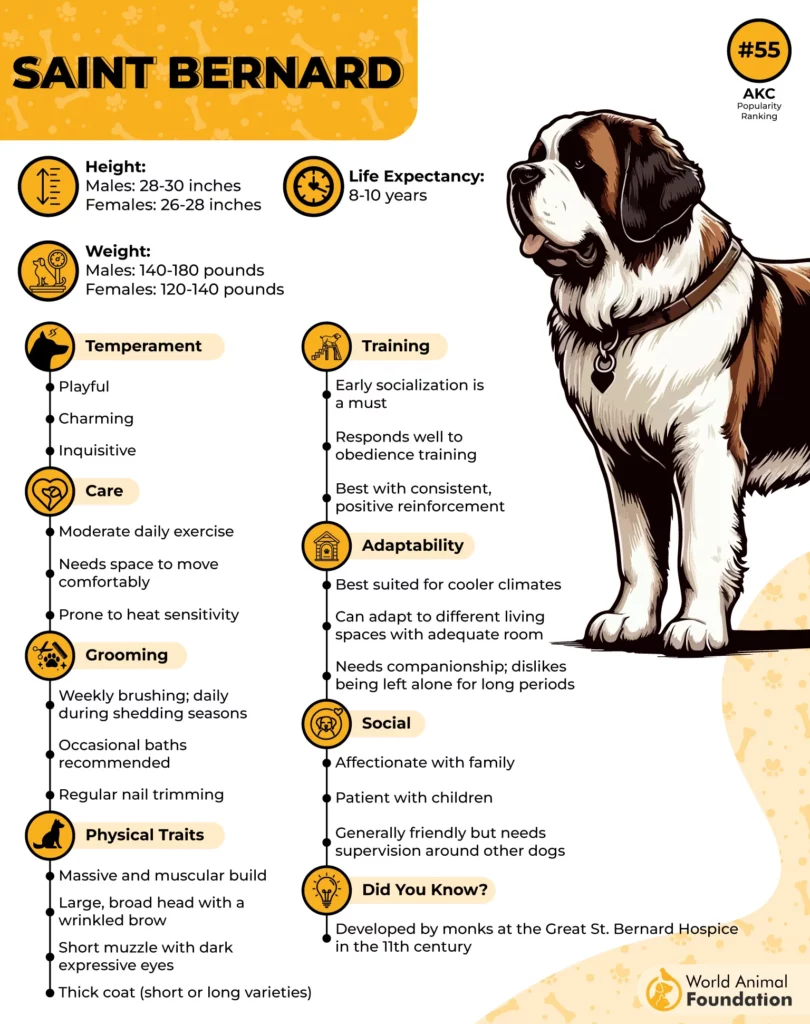
Bullmastiff vs. Saint Bernard: Training and Intelligence
Let’s finish this tail-wagging showdown with a look at training, intelligence, and health care for the Bullmastiff vs. Saint Bernard. Prepare for laughs, facts, and a little slobber along the way!
Bullmastiff:
Intelligence Level: High—but don’t expect circus tricks. They’re smart, but very independent.
Training Style:
Needs firm, consistent leadership. They don’t respond well to harsh correction, but they’ll walk all over you if you’re too soft. Think of them like a calm bouncer who needs a clear job and a respectful boss.
Challenges:
Stubborn streak? Oh yes.
They get bored quickly, so keep training sessions short and purposeful.
Socialization is crucial early on to avoid overprotectiveness.
Saint Bernard:
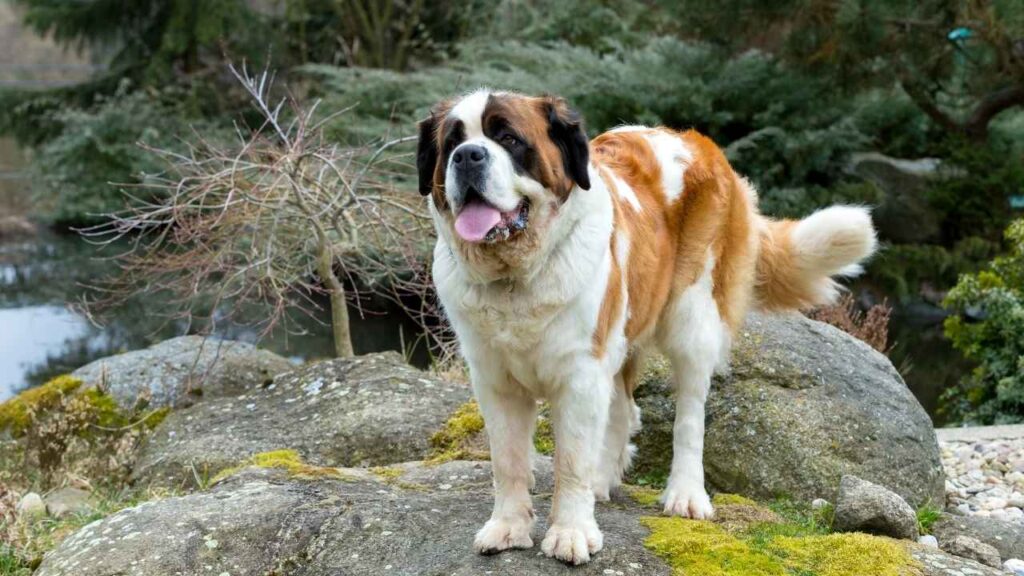
Intelligence Level: Moderate. They’re smart enough to learn what matters, but they’re not in a rush about it.
Training Style:
Gentle and patient work best. These dogs are sensitive and love praise. Treats help, too—especially if they’re the size of a sandwich.
Challenges:
They can be slow to mature, both mentally and physically.
They’re big, and they know it—so early leash and manners training is non-negotiable.
They can be distracted by… well, everything. (“Ooh! Snow!”)
Both breeds are drool-slinging sweethearts in their own right. Just decide: do you want the stoic bodyguard or the giant, goofy bear?
Bullmastiff vs. Saint Bernard: Health and Wellness Care
Let’s dive into the health and wellness comparison of the Bullmastiff vs. Saint Bernard, where both breeds tip the scales not just in size, but in vet bills, slobber, and some seriously high-maintenance healthcare needs.
Bullmastiff:

Life Expectancy: ~7–10 years
Common Health Issues:
Hip & elbow dysplasia
Bloat (gastric torsion)
Heart issues
Cancer (unfortunately, more common in the breed)
Care Tips:
✅ Keep them at a healthy weight to protect joints
✅ Avoid intense exercise right after eating
✅ Regular vet check-ups to monitor heart and hips
✅ Drool Factor: Moderate—but manageable. Mostly a chin towel situation.
Watch Out: These dogs are heat-sensitive due to their short muzzle. Hot weather? Crank that AC.
Saint Bernard:
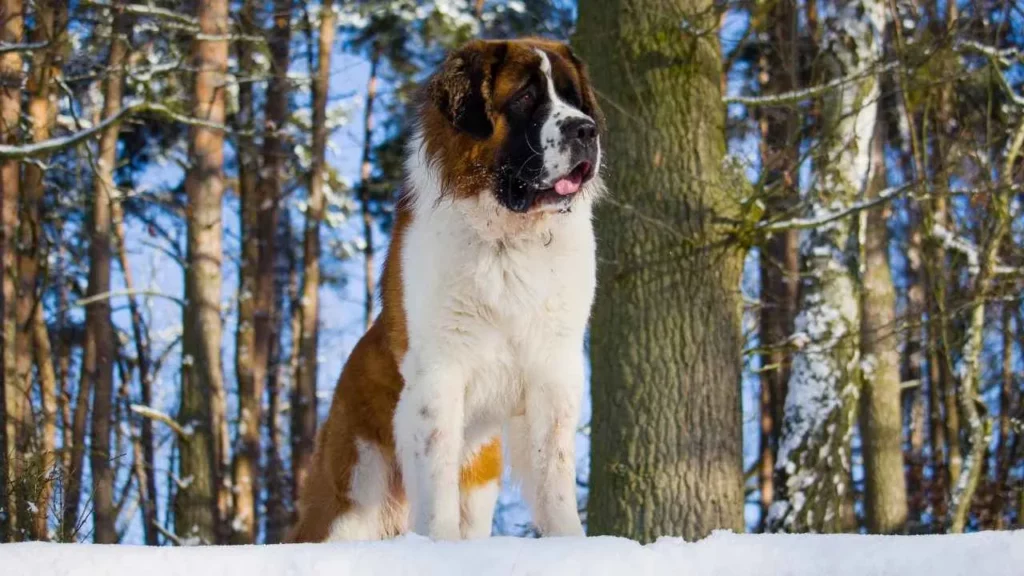
Life Expectancy: ~8–10 years
Common Health Issues:
Hip and elbow dysplasia
Entropion (eyelid rolls inward)
Bloat
Heart disease
Obesity (they’ll eat like a frat boy if you let them)
Care Tips:
✅ Gentle exercise to protect joints
✅ Keep ears and eyes clean—prone to infections
✅ High-quality diet to manage weight
✅ Drool Factor: HIGH. There will be drool on your pants, walls, and soul. Accept it.
Watch Out: Like Bullmastiffs, they’re sensitive to heat. Summer walks? Think vampire hours—early morning or late evening only.
Bullmastiff vs. Saint Bernard: Breeding and Lineage
You’ve come this far—now it’s time to dive into the origin stories of these two giant dog breeds. Let’s look at the breeding and lineage of the Bullmastiff and the Saint Bernard, with some fun twists, a bit of historical drama, and just the right amount of fur-flying flair.
Bullmastiff:
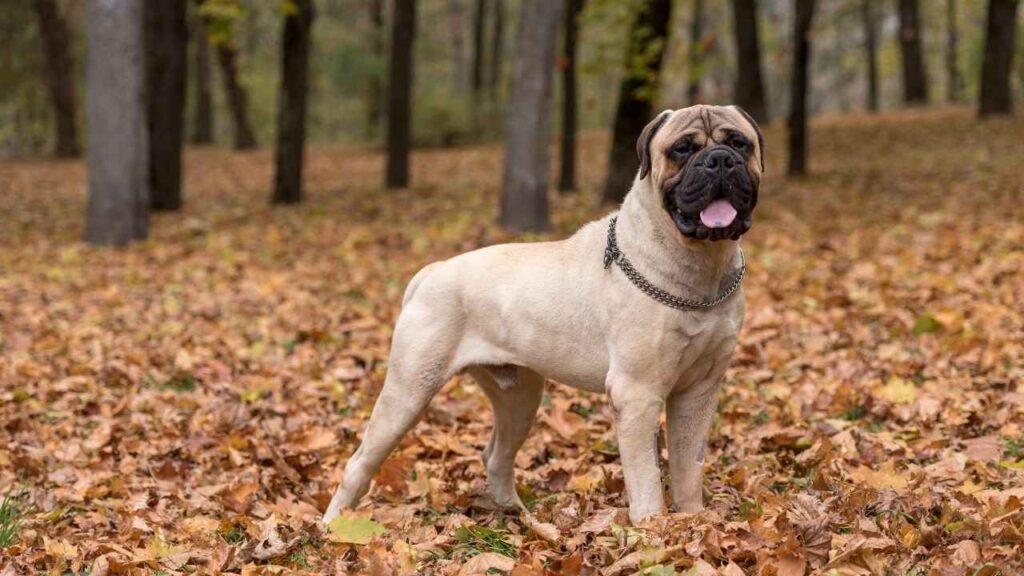
Origin: England, mid-19th century
Purpose-Bred For: As per Wikipedia, it was bred in the 19th century as a guard do. By the early 20th century, this crossbreed had become widely used by gamekeepers to help control poaching.
Lineage: A deliberate cross between 60% English Mastiff and 40% Old English Bulldog.
The Mastiff gave size and strength.
The Bulldog gave tenacity, courage, and stubborn determination to stop a poacher in their muddy tracks.
Fun Fact: Bullmastiffs were sometimes called the “Gamekeeper’s Night Dog” because they worked at night in silence, blending into the shadows like a furry ninja.
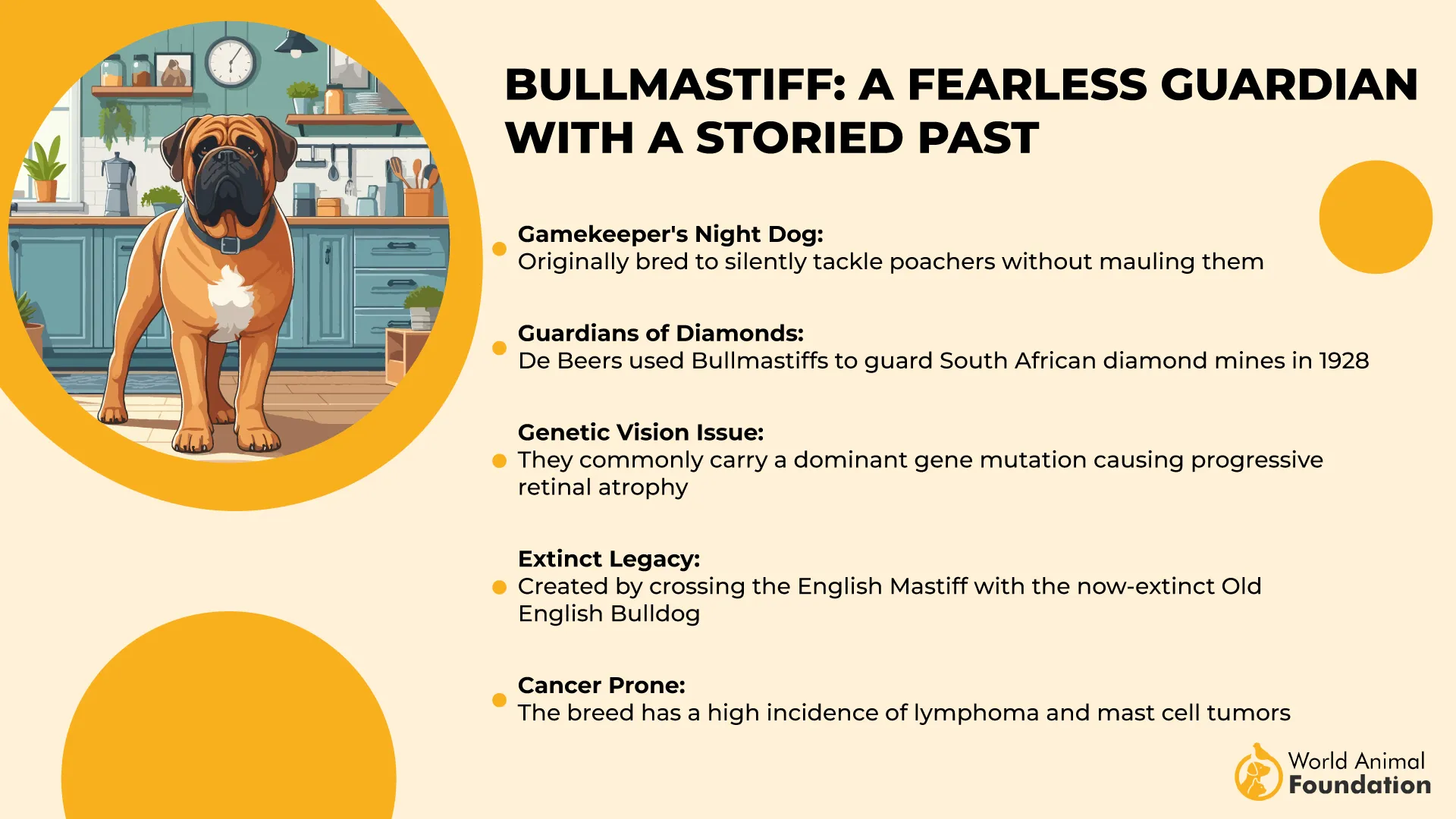
Breeding Style: Function-first. Appearance was secondary to their working ability, so early Bullmastiffs had more variation. Over time, breeders refined the look we see today: short coat, black mask, and a body that says, “You shall not pass.”
Saint Bernard:

Origin: Swiss Alps, around the 11th century
Purpose-Bred For: Rescue work, particularly by monks at the Great St. Bernard Hospice, a travelers’ shelter founded in the Alps near the treacherous mountain pass.
Lineage: Descended from large farm dogs brought by Romans (yep, ancient Roman war dogs are part of the family tree!), later refined by monks.
Originally shorter-haired and stockier.
Crossed with Newfoundlands and other large breeds in the 19th century to help them better endure the cold, leading to the long-haired variety we often see today.
Fun Myth: Everyone’s heard about the Saint Bernard with a barrel of brandy tied around its neck. It’s adorable—but mostly myth. There’s no real evidence they carried booze, but hey, it adds to the legend.
Breeding Style: Bred with purpose and compassion. The monks were more focused on saving lives than winning dog shows, so Saint Bernards were raised for temperament, strength, and instinctive rescue behavior.
Conclusion
The Bullmastiff and Saint Bernard are giant breeds, among the biggest and tallest dogs, best suited for experienced dog owners. Both breeds are excellent family dogs, known as active working dogs and reliable guard dogs. Raised from a young age by a reputable, responsible breeder, these pups form strong bonds with humans, especially children and kids.
Bullmastiffs, similar to mastiffs, are eager to please and protect livestock, while Saint Bernards are gentler giants often suited for house life. Despite some differences, the two breeds share many similarities in nature and average temperament. Other breeds like the Great Dane and the Tibetan Mastiff are great choices, but can be challenging. Their intelligence and loyalty make them great companions for families ready to raise socialized pups and enjoy the rewarding experience of owning one of these amazing breeds.


